Noel Cameron-Baehnisch took a trip to Poland in 2004, seeking out the places our ancestors emigrated from in the mid-19th century. Noel was the pathfinder for Len’s trip (see his A journey of ‘Bahnisch’ family discovery in Lower Silesia, Poland). Noel went on a tour with Homeland Tours, led by David Zweck and a Polish guide. Len found the same places with a hired car and a ‘Tom Tom’ with the help of notes supplied by Noel.
First some background on how it all hangs together, then a selection of Noel’s photos, together with edited comments he provided.
Len and Brian are brothers. Noel is the son of their oldest cousin, Mona, who married Jim Cameron.
In the paternal line, Wilhelm (“Willi”) Bähnisch left Motyczyn (then Möttig) as a 17 year old in 1848. He married Franziska Ruciak, who came from Dąbrówka Wielkopolska (then Groß Dammer) as a 15 year old in 1846. Here’s a photo (see Note 1) of Willi:
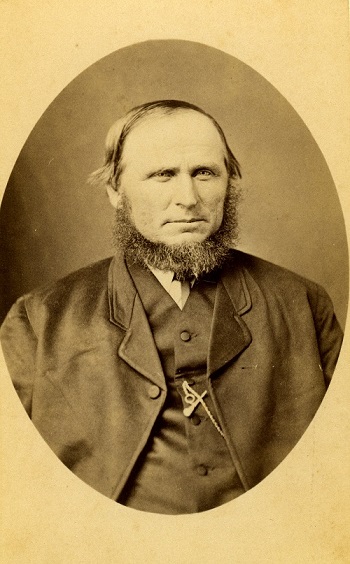
Willi and Franziska had 13 children. Their eighth was also named Wilhelm (“Willi Junior” or “Bill”), Len and Brian’s grandfather. Bill married Louise Gregor. We have a photo (see Note 2) of them also:
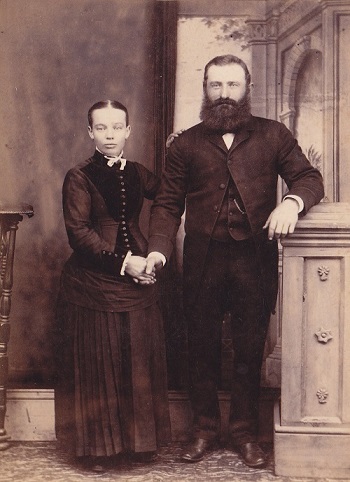
Louise’s parents were Wilhelm August Gregor, who came from Pawłowice Wielkie, formerly Pohlwitz bei Liegnitz or Groß-Pohlwitz, and Ernestine Pauline Schulz from Bielany, formerly Weißenleipe.
Motyczyn, Pawłowice Wielkie and Bielany are all near Legnica, formerly Liegnitz, a city of some 100,000 people and the main centre of Lower Silesia (Polish: Śląsk; German: Schlesien). It is marked “A” on this map:
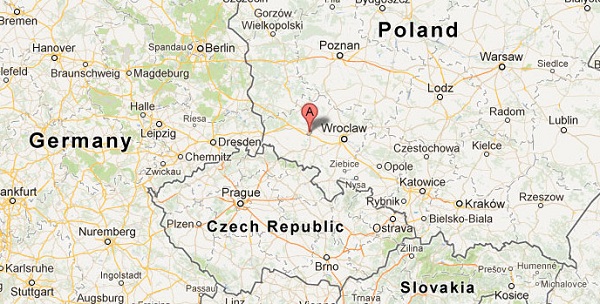
Dąbrówka Wielkopolska is further north, almost due west of Poznań in the province of Posen. Both Posen and Silesia were provinces of the Kingdom of Prussia (German: Königreich Preußen) when our ancestors lived there.
The first photo, taken by Noel’s Polish guide, Bolek, shows Noel leaving Bielany and heading west to Pawłowice Wielkie: it seems to be exactly the same sign as the one in Len’s photos:
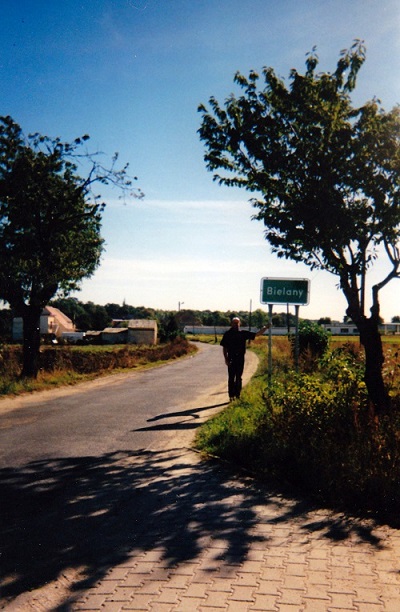
Next we have Noel at Pawłowice Wielkie (southern entrance), again taken by Bolek:
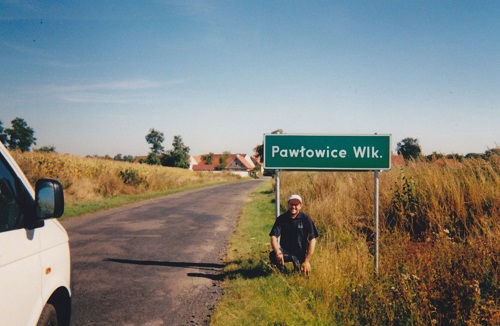
The front of the VW tour van is in shot on the left.
Next we have the Old Manor House in Pawłowice Wielkie, taken by Noel from inside the big courtyard. The little black dog in the photo was quiet but Noel says there was another dog barking at them as they were trespassing.
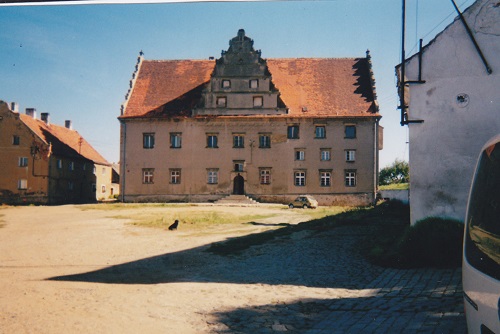
On the same day the tour went to Motyczyn:
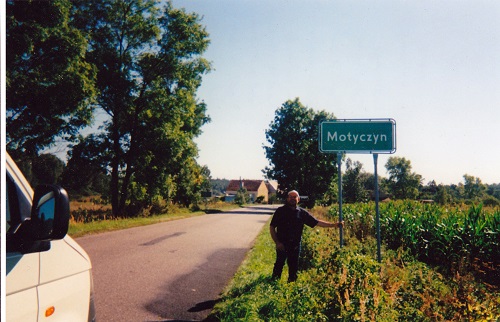
Noel was grinning because his right foot had just gone down into a ditch hidden by the grass. He was balancing himself by clinging to the sign. Again Len took a photo from almost exactly the same spot at the northern entrance to Motyczyn. In Len’s photo the tree has grown in the last ten years and a new house has been added on the right.
There were maize crops everywhere. Bolek said the maize is winter-fodder. In September the light is so different to June’s light: winter is approaching and the crops have to be gathered in, for the severe winter.
The average minimum in mid-winter Legnica is a bracing -3°C with the maximum a miserly 4°C, reason enough to emigrate!
Noel found the next house the most interesting in the village: half-timbered, at south end of village, opposite the entrance to the South Wood:
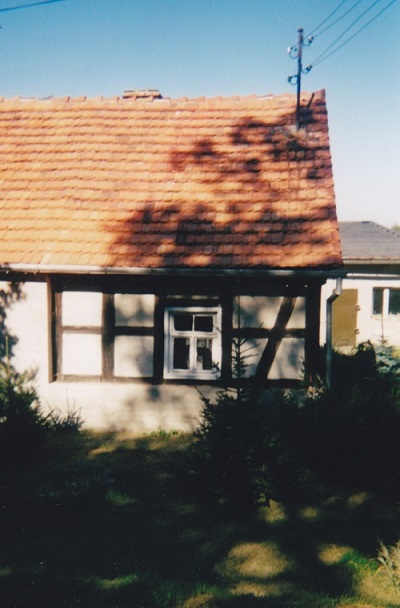
In all probability the house has been repeatedly renovated and extended over the centuries.
Noel’s photo caption said: “The village is somewhere between prosperous and dilapidated.” Len had a similar impression.
As Len said, the Ruciaks in Dąbrówka Wielkopolska worshipped in the tiny village of Chlastawa. Here’s Noel’s shot of the wooden church they attended:
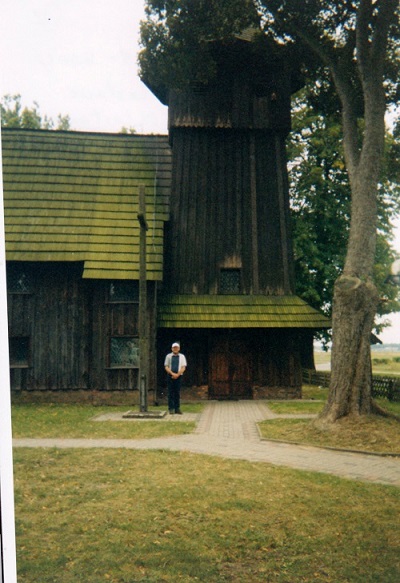
This church was Pastor Fritschke’s church: he and some of his congregation migrated to SA, where he clashed with Pastor Kavel. In Len’s photo the lowest branch of the pine tree has been sawn off during the last ten years; or maybe it got ripped off in a winter storm. While the Ruciaks worshipped there as Lutherans the church is now Catholic. The yellow-green colour covering the shingle-roof is probably moss.
The church was built by the local nobility in 1639; during the Thirty Years War (1618-1648), which mostly raged further west.
Noel also photographed the “folkloric” Catholic church in Dąbrówka Wielkopolska, where a lot of money had just been spent.
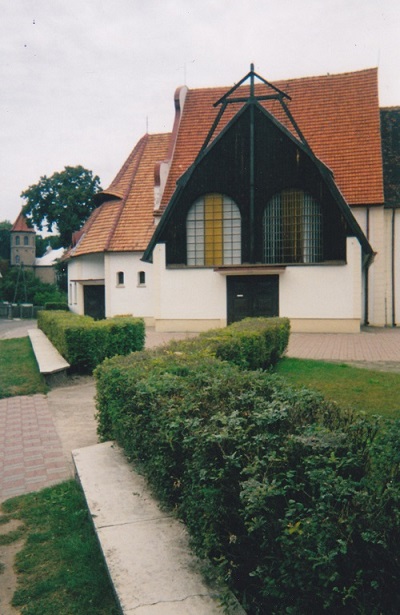
The church which is heritage listed also dates from 1600s. The foundation stones were “glacial erratics”, left behind after the Great Ice Sheet retreated. The church has been repeatedly renovated and extended.
The low hedges in front are now gone. In the background, you can see one tower of the “Chateau” below:
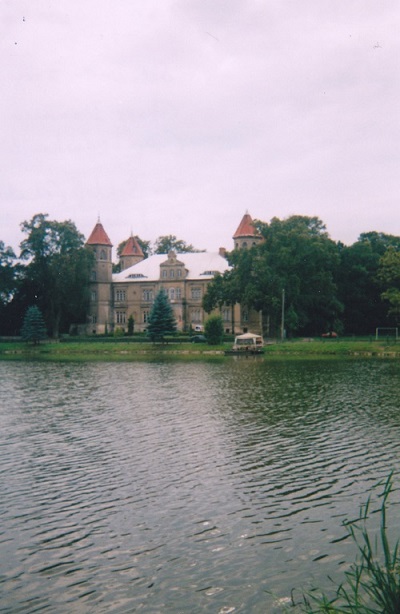
The chateau dates from 1859, after the Ruciaks left.
Here’s another photo from the internet in a different season.
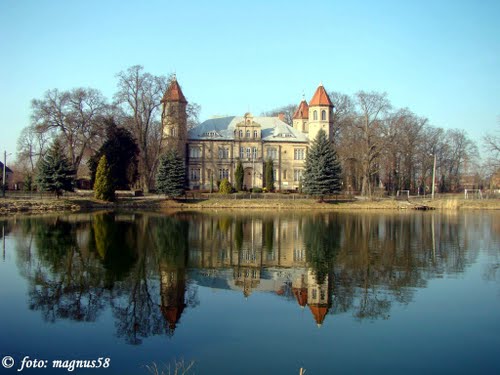
The Polish Wikipedia has an excellent article on the village with this thumbnail image:
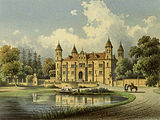
As a final note this post has used three different versions of our surname – Bähnisch, Bahnisch and Baehnisch.
Willi’s birth certificate, if they got it right, would have shown Bähnisch. The umlaut ä was dropped in Australia, because typewriters couldn’t cope. The umlaut is often rendered in English by adding an ‘e’ to the vowel, hence Baehnisch. One branch of the Australian family has adopted this practice. If you look in the White Pages you’ll see Bahnisch and Baehnisch in approximately equal numbers.
The pronunciation follows the Silesian German dialect with Bay-nish. The ‘ay’ diphthong doesn’t exist in Standard German (German: Standarddeutsch, colloquially also Hochdeutsch) which would render the sound Bair-nish.
Notes:
1. This photo was in Brian’s possession, probably from a shoe box of photos left by his mother. It was scanned commercially by Kodak.
2. Scanned by Noel Cameron-Baehnisch 31 Dec 2012 AD, from Ellen Bahnisch’s Collection. It portrays Len and Brian’s paternal grandparents. Louise Gregor lost her father to gallstones before she was born at Bethel, near Kapunda. After her mother died of heart disease, Louise was fostered and became a servant in the Stiller household at Bethanien (Bethany), where she was courted by old Bertha Stiller’s first cousin, Ernst Wilhelm (“Willi” in German, “Bill” in English) Bahnisch Junior. They married in Langmeil Church, Tanunda, in 1889 when he was 25 and she was 5 months older than him! She is wearing a beautiful two-tone black dress (black was required of all brides and married women); she is probably wearing a corset to give her that fashionable but unhealthy hourglass look. Both have blue eyes, which is why their eyes look a bit blank. Her hair style is that of Old Queen Victoria. Tragically she died of childbirth on the 24 Nov 1900, leaving behind 3 healthy children. RIP, Louise. Sadly her grave is lost.
For related posts see the Bahnisch family history tag.

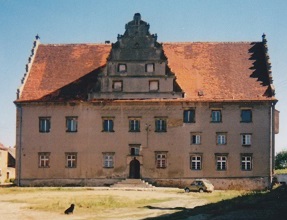
Thanks a lot for that. Just goes to show the differences over a single decade. Glad you mentioned things that had been built after your ancestors migrated – how often do descendants wonder why their great grandparents never spoke about a particular building without realizing that it was possibly built after they left?
Noel, I’d like to acknowledge and thank you for the painstaking work you’ve done over the years. In our family you’re a legend!
Until recently I didn’t know the story of my paternal grandmother Louise Gregor, nor the relationship with the Stiller family. Growing up in our district they seemed to swarm everywhere! Now that I understand something of how much we owe the Bethany Stiller family, all is forgiven!
Has there been a Bahnisch family history in Australia ever been published? I believe Brian you are working on one about the three Bahnisch siblings who came to Qld to Downfall Creek.
I came across this memoir by chance today. [Grandmas Story] It is from the Stiller family branch from which Noels grandparents purchased their farm in 1915.
It gives a very short account of life in Silesia in the 1840’s; pioneering in a new land at Bethel in the Barossa and then the grandsons again being pioneers in Qld, early 1900’s.
The settlement in Qld was done under a family settlement scheme where an extended family took up adjoining properties. I was aware of the double marriage relationship with the Hoffmann family but only in the last 20 years became aware that the Bahnisch siblings who came with where in effect part of the family as foster children (don’t know if it was a formal arrangement) to Traugott & Bertha Stiller.
Dale, thanks for the link. Brilliant! As you know my mother was raised a Hoffmann. The author was referred to in my youth as “Aunty Ida” but I never met her.
On the Bahnisch book, I have on file a list of 15 pieces of writing, 10 by yours truly. I’ve been meaning to send it to you for the longest time! Late this month Len and I with my wife are heading to Central Australia, coming back via the Simpson Desert. If we are ever seen again I think Len still has it on his list to look at a book project, perhaps an online project as well or instead.
As mentioned in the post, our grandmother Louise Gregor died in November 1900. At that time Em would have been 10, Charlie 8 and Rudi/Dick 2. Grandfather Bill married again in 1902 to Wilhelmine Bartsch and in 1903 she gave birth to her first child. At that time, I understand, it was decided that she couldn’t look after the three older ones and they were shipped off to the Stillers. I doubt there was anything formal about it.
Charlie followed the Stiller Bros to Qld in 1911, I think. Em and Rudi followed in 1914.
Charlie would have been 22 or 23 when he bought the land from Carl Stiller.
I know my father (Rudi) was confirmed in Kapunda, so I’m not sure whether the three Bahnisch siblings remained domiciled with the Stillers for the whole time before they headed north. I know my father and his step mother were very close, so he may have returned to the nest for a time.
Thursday evening. And in return, I must thank you, cousin Brian, for putting together the post and adding it to your blog. I had lost interest in the subject and then out of the blue your brother Lenny sent me an e-mail on the 19 May and asked for the Polish names of our ancestral villages. Now I’m translating Polish articles into English and busy with related matters! My enthusiasm won’t last but I’m enjoying it whilst it does.
The KAESLER BOOK and the SCHRAPEL BOOK have been published; updates have not been published because it would be a mammoth task. The Stiller, Ba(e)hnisch and Gregor books have not been published; but many electronic Research Reports have been produced by many people and many of these reports are freely in circulation.
The Stillers lived and still live at Bethany, not “Bethel”, outside Tanunda. Bethel is outside Kapunda and is where Louise Gregor was born, 2 months after her father died of gallstones. Bethel was “Moravian” and not “Lutheran”.
The Bahnisch farm at Downfall Creek (between Miles and Wandoan), called “Orchard Vale”, was sold to an outsider in 2013.
The 3 Baehnisch children were blood-relatives of the Stillers and so were not legally fostered by Old Bertha Stiller nee Kaesler; such social fostering was very common inside a tight-knit community and you can be sure that Em was busy all day with domestic and farm work and Charlie and Rudi would have done farm work from the earliest age, when not attending Lutheran School or church. There are no documents to tell us when the 3 Baehnisches joined the Stiller household, so we have to resort to careful guesswork and educated speculation. Their step-mother was Bertha* Auguste Wilhelmine BARTSCH, always known as “Bertha”; she died in 1957 at Kapunda.
Further research will uncover new information but that is always easier said than done.
From Noel in very wet and very cold Angaston. Pardon my own typos and errors!